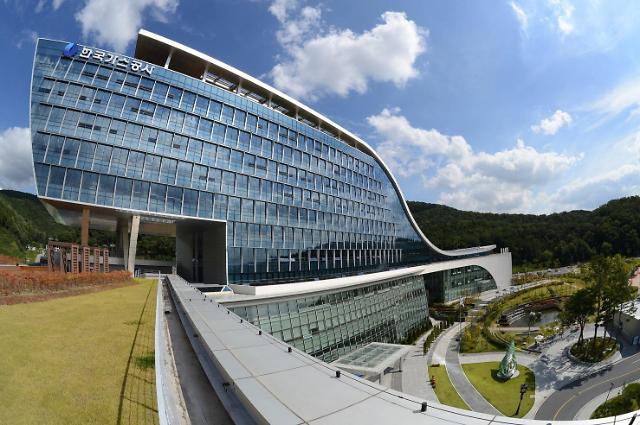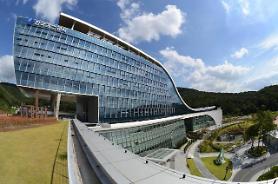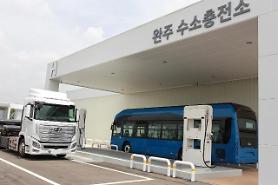
[Courtesy of KOGAS]
SEOUL -- South Korea's state gas company tied up with a refiner to build a liquid hydrogen plant with an annual production capacity of 10,000 tons by using waste cold energy generated from the regasification of liquefied natural gas (LNG). The plant would be completed at the idle site of an LNG base in December 2024.
Imported LNG must be regasified at receiving terminals while waste cold energy is released by vaporizers. Waste cold energy from regasification can be captured and stored by using a thermal energy storage system. Korea Gas Corp. (KOGAS), which operates LNG regasification terminals and natural gas pipelines in South Korea, teamed up with GS Caltex to establish a hydrogen value chain.
"If KOGAS, which has the world's largest LNG production infrastructure, and GS Caltex, which has South Korea's largest energy supply network, cooperate, it will create a synergy effect that leads hydrogen production and sales," KOGAS CEO Chae Hee-bong said in a statement on May 28.
KOGAS and GS Caltex would extract hydrogen from LNG and supply liquid hydrogen to charging stations. It would be the first use of waste cold energy from LNG regasification to liquefy hydrogen, KOGAS said, adding the method would reduce production costs by up to 30 percent.
They would build a network of liquefied hydrogen charging stations in Seoul and nearby areas and cooperate in demonstrating and commercializing carbon capture utilization (CCU) technologies. CCU is the process of capturing carbon dioxide (CO2) to be recycled for further usage.
KOGAS is leading a campaign to popularize hydrogen as alternative clean energy. In 2019, the gas company unveiled a roadmap to supply 1.73 million tons of hydrogen, create 25 hydrogen production facilities and a 700-kilometer plumbing network using LNG pipelines by 2030.
Copyright ⓒ Aju Press All rights reserved.



